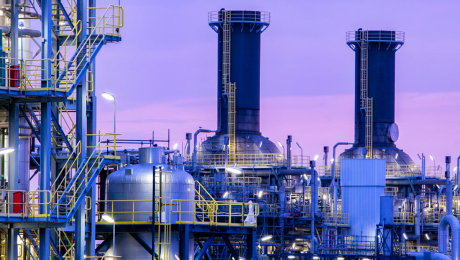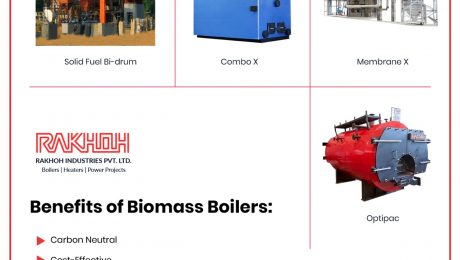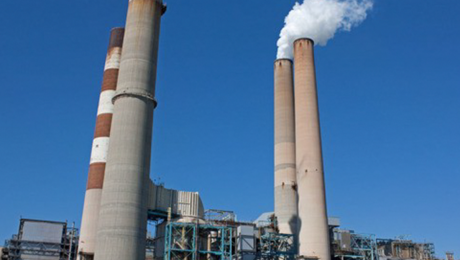- Home
- About Us
- Products
- EPC projects
- Technology
- Services
- Clients
- Media
- Blog
VIEW ALL -
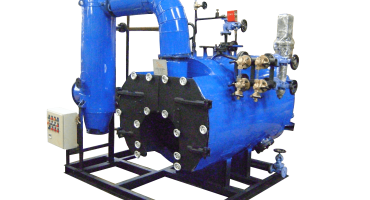 19 July 2023 by bullweb, in Boiler
19 July 2023 by bullweb, in BoilerA Guide to Boiler Maintenance in Chemical Processing Plant
Steam boiler systems are irreplaceable in the chemical process industries. Among...READ MORE +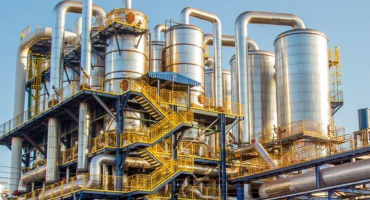 19 October 2022 by bullweb, in Steam Boiler,Steam Jackets
19 October 2022 by bullweb, in Steam Boiler,Steam JacketsSteam Jackets in Boilers | Definition, Types, and Applications
Steam is integral to meet various process operational requirements in manufactur...READ MORE +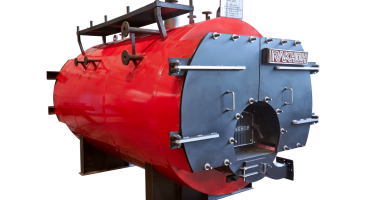 17 October 2022 by bullweb, in Boiler,Steam Boiler
17 October 2022 by bullweb, in Boiler,Steam BoilerSigns that indicate replacement for steam boilers
Steam boilers are vital equipment for steam generation in the process and manufa...READ MORE +
- Careers
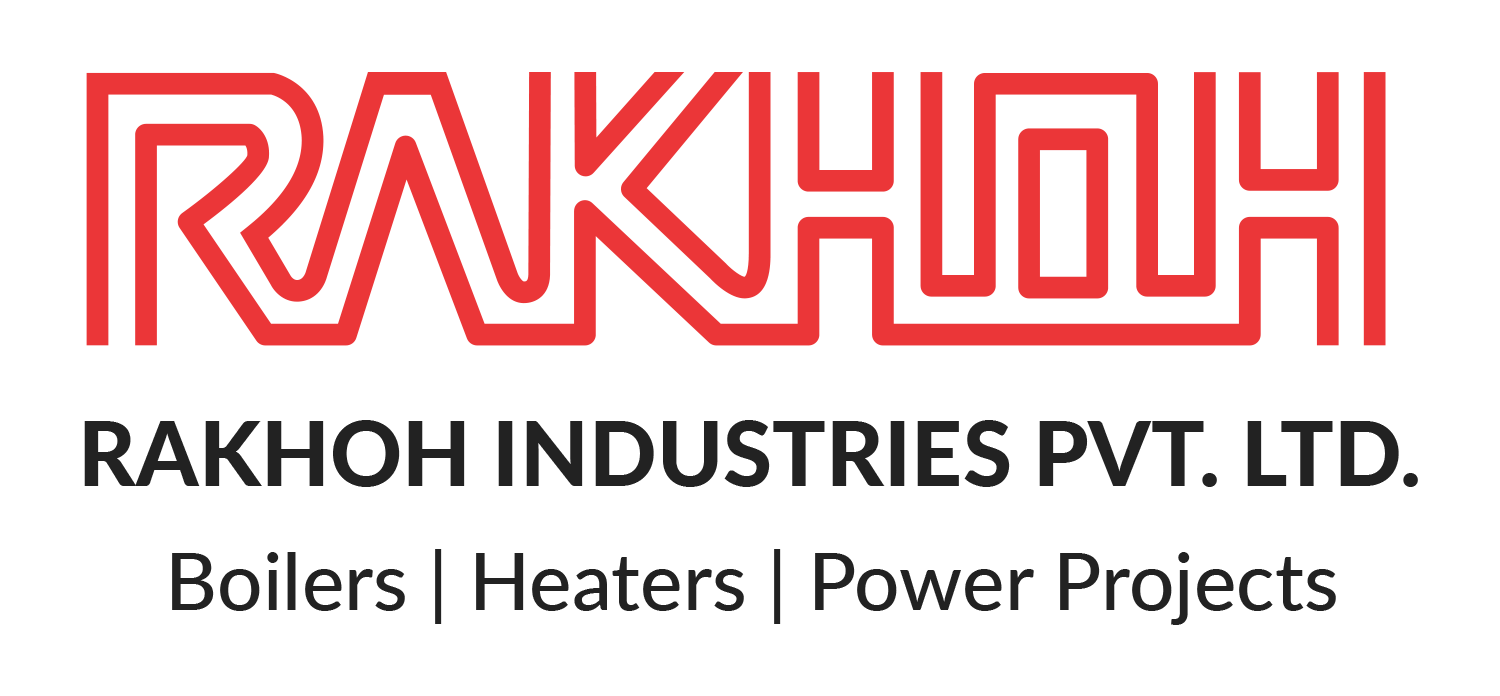
BOILER ACCESSORIES, THERMIC FLUID HEATERS & SPECIALTY FABRICATION.
+9120 - 66308333
Email: enquiry@rakhoh.com
RAKHOH BOILERS
S-11, T Block, M.I.D.C.,Bhosari, PUNE - 411 026. Maharashtra, India
BLOG & STORIES
Steam boilers are integral for the processing operations in the manufacturing industries. Plant managers follow several guidelines and practices to ensure that the boiler system is operating without any issue. Boiler problems such as corrosion, carryover, scaling, etc., are usually inevitable and require immediate action when detected. However, in case of boiler issues like overheating, prevention is better than cure. Boiler overheating is a serious boiler problem that may cause severe damage to the process plant and the operating personnel by putting them at the risk of explosion. Although advanced boilers are equipped with safety fittings to ensure locking the component before the boiler overheats, it is prudent to be aware of boiler overheating and its signs to prevent it.
What is Boiler Overheating?
Boiler overheating is caused by the failure of the safety equipment. Steam boilers overheat when hot water transported to the central heating system is hindered from circulating. It is usually due to pump failure or blockage in the system. The failure of safety controls maintaining the temperature, pressure, gas, and water supply lead to boiler overheating. In some cases, it may result in a condition termed ‘runaway boiler’ that is hazardous to both the plant and the operating team.
As the boiler system overheats, the internal components of the boiler face immense stress. It causes irreparable damage or, in severe cases, boiler explosion. With the boiler overheating, the components may melt and release toxic smoke in the vicinity. Nowadays, advanced steam boilers with automation control lock the units to prevent overheating and display an error message to notify the plant managers.
Causes of Boiler Overheating:
If the boiler overheating is not prevented at early detection, it may cause tremendous harm to the surroundings and the people. Common causes of boiler overheating are as follows,
- Limescale Build-up
- Blockage in the system
- Faulty pump
- Faulty thermistor
Limescale Build-up:
Limescale build-up on the heat exchangers hinders the water flow that leads to boiler overheating. The purpose of a heat exchanger is to heat the water before circulating it for the combustion process. Limescale build-up is also known as kittling as it produces a kettle’s whistle sound.
Blockage in the system:
Blockage in the steam boiler is indicated by strange noises emitting from the system. Radiator not heating properly is another sign of a blockage in the boiler system. It is generally cleaned by a power flush process that eliminates the limescale, rust, and other impurities to allow the seamless circulation of hot water.
Faulty pump:
The purpose of the pump is to circulate the water in the steam boiler system. If the pump fails to operate, the hot water fails to leave the steam boiler system, resulting in boiler overheating. The pumps are repaired by an engineer, but usually, they need to be replaced.
Faulty thermistor:
The thermistor monitors the water temperature to determine the requirement to increase or decrease the temperature as per the demand. As the thermistor fails, it leads to water temperature getting too high. It consequently results in boiler overheating.
Prevention for Boiler Overheating:
It is prudent to prevent boilers overheating rather than repairing the aftermath. Boiler overheating can be prevented by,
- Fitting a magnetic filter to collect debris and rust from the heating system before it builds-up and forms a blockage. The build-up of debris is one of the common causes of various boiler issues that should be avoided.
- Installing a scale reducer decreases the amount of limescale formation in hard water. Reduced limescale ensures that the steam boiler system is free of hindrance in water flow that may cause boiler overheating.
- Do not supply the steam boiler with cool water when the system is overheated. It results in the boiler flashing into steam as it is introduced to the hot components of the steam boiler, causing a tremendous and immediate rise in pressure. It can lead to boiler explosion or rupture of components.
- Avoid constant flow of gases in the steam boiler as it causes rapid increase of temperature and pressure, leading to a runaway boiler.
- Reparation of steam boilers by an inexperienced engineer leads to issues like wiring errors, manual opening of gas valves that leads to a constant flow of gas, removing pressure relief valves while repairing boiler leakage and neglecting to fit it back that prevents the boiler system from facing excess pressure. It consequently leads to boiler overheating.
Conclusion:
Rakhoh Boilers, with their 38+ years of expertise in steam boiler manufacturing and thermal solutions, have been serving over 20 process industries globally. We manufacture an efficient and reliable range of industrial steam boilers, waste heat recovery systems, thermic fluid heaters, and boiler accessories. We provide the best boiler services like steam trap assessment, boiler automation, energy audit, annual maintenance contract, etc., to boost the efficiency and productivity of the steam boilers.
To know more about our products and services, visit www.rakhoh.com
Biomass boilers are emerging as the future of thermal solutions in the process and manufacturing industries. Boiler maintenance is an important factor to ensure hassle-free operations and optimum efficiency. In the case of biomass boilers, regular maintenance is essential to prevent the breakdown of the boiler. Regular maintenance of biomass boilers cannot be neglected as it may cause severe damage to the boiler system. It is interesting to note that the maintenance of biomass boilers varies from other conventional fossil fuel boilers due to the disposal of the ash produced in the combustion process.
Cleaning and Maintenance of Biomass Boilers:
An ideal way to assess whether the biomass boiler needs cleaning is by examining the increase in fuel consumption. The primary cause of an increase in fuel consumption is due to ash blocking the open airways of the heat exchanger and reduction of the transition of heat in the heating system.
As per the fuel quality, biomass combustion can lead to 0.5-1.5% of their weight in ash, which is released in an ash pan located beneath the grate. The ash collected needs to be removed manually at regular intervals after necessary operational cycles. The boiler maintenance intervals differ depending on the frequency of biomass boilers used for heating. Automatic de-ash systems are used to release the ash into an ash bin, thereby reducing the required amount of workload. However, the ash bin requires it to be emptied from time to time.
Another benefit of biomass boilers is that the collected ash can be used further as a fertilizer. Additionally, the chimney should be cleaned at least once every year.
Disposing Ash in Biomass Boilers:
Ash is the primary by-product of the combustion of biomass fuel. The ash generated by biomass fuel is termed potash. It is useful for the farmers as a top dressing and also for horticulturalists as a component of their compost.
Dispensing ash in such a method is highly beneficial to the environment as the nutrients from the ash are fed to aid in regenerating the wood, collected to form the fuel in the first place. It leads to the increasing popularity of biomass fuels with a boost towards the planting of trees.
Biomass boiler ash can either be disposed of as a fertilizer or landfill waste if the ash is produced in small amounts.
Biomass boilers equipped with automatic ash extraction systems usually include,
Internal ash extraction:
It includes one or more augers that pass ash from the combustion chamber into an ash pan or an external ash auger.
External ash extraction:
It includes one or more ash augers that collect ash from the internal ash augers, emptying itself into a self-contained ash bin.
Fire tube pneumatic cleaning:
It includes various hoses or pipes that automatically pass a blast of compressed air through fire tubes located on the last pass of a three-pass biomass boiler system. It is also termed as the boiler’s ‘tube nest.’
Biomass boilers equipped with the ash extraction system require a daily inspection of the boiler room. The boiler operator inspects the boiler thoroughly to ensure that the combustion levels and flue gas temperatures are within determined limits. The time required for boiler maintenance depends on the size of the boiler, fuel type, and rate of consumption.
Biomass boilers without automatic ash extraction systems need frequent shutdown and need manual servicing. The added cost of boiler maintenance and workload directly impacts by reducing fuel savings and job performance. On the other hand, biomass boilers with automatic ash extraction and tube cleaning increase the boiler performance, efficiency, and lifespan. Therefore, it is important to keep the fire tubes clean of ash for optimal efficiency. As the ash accumulates in the tubes, it acts as an insulator for heat transfer. It results in wasting the heat in the exhaust instead of exchanging it into the boiler water.
Biomass Boiler Maintenance:
Regular maintenance of a biomass boiler ensures a longer life span compared to the conventional fossil boiler system. It leads to internal combustion parts lasting long and less consumption of fuel.
Components Assessed During Biomass Boiler Maintenance:
- The internals of the heat exchanger are examined and cleaned of carbon build-up.
- The boiler and bunker feed screws are assessed and cleaned.
- Geared motor units, bearings, and seals are inspected and greased if necessary.
- Checking every safety equipment.
- Checking the ignition system.
Conclusion:
Rakhoh Boilers, are one of the trusted boiler manufacturers in India, with more than 3000 successful boiler installations in over 26 countries worldwide. We manufacture a range of efficient steam boilers that provide effective combustion with biomass boilers. We deliver waste heat recovery systems, thermic fluid heaters, boiler accessories, and various boiler services to over 20 process industries.
Visit www.rakhoh.com to learn more about our products and services.
Steam boilers are imperative in the process and manufacturing sector to generate high-quality steam. Plant managers monitor various factors to ensure hassle-free operations. One of such important factors is steam pressure. An oversized steam boiler utilizing saturated steam opt for reducing the steam pressure. Steam pressure is determined by the factors like the maximum safe working pressure of the steam boiler and condensation within the pipe.
What do you mean by Reducing Steam Pressure?
Steam pressure reduction means reducing steam pressure of the boiler through the pressure control included in the steam boiler. Reducing steam pressure impacts the high-pressure part of the boiler. The pressure-reducing valves (PRV) adjust the pressure at lower levels within acceptable limits. Therefore, it can be concluded that reducing steam pressure results in considerable savings in the high-pressure section of the steam boiler.
Why Reduce Steam Pressure?
Listed below are some of the energy losses in steam boiler systems that can be decreased by reducing steam pressure,
- Combustion Loss:
Reducing steam pressure results in lowering the stack temperature that consequently leads to improved combustion efficiency. The ideal method to determine the temperature reduction and savings for a steam boiler is by conducting a combustion test at different pressure and constant load.
- Boiler Blowdown Loss:
Reducing steam pressure leads to a reduction of blowdown loss in a steam boiler. If the energy is recovered through a blowdown heat recovery system, it hinders any chances of further savings through reducing steam pressure. On the other hand, draining of blowdown water and venting of flash steam result in savings from reducing steam pressure.
- High-Pressure Steam Piping Heat Loss:
Heat loss from steam and condensate piping occurs in two stages. Initially, the heat is conducted from the hot steam through the walls and insulation surrounding the pipe to the outer surface. Later, the heat is lost by radiation and convection to the ambient air.
- Steam Leaks from High-Pressure Components like Valves, Piping, and Other Components:
External steam leaks take place in piping, joints, valves, and other components for various reasons. The degree of leakage varies on the maintenance of the steam boiler. It is mainly caused due to corrosion, erosion, water hammer, faulty design, or poor installation. Reducing steam pressure decreases the leakage rate in the high-pressure part of the steam boiler system.
- High-Pressure Steam Trap Leakage:
Poor steam trap maintenance is a major contributor to losses in the steam boiler system. Although reducing steam pressure is not an alternative for regular trap maintenance, it can result in savings of 0.6% of fuel input. Some of the other factors that impact the steam loss that should be considered are,
- Leakage of only a partial opening of the trap orifice, as compared to a “blow through”
- Steam trap flow coefficient
- Condensate passing through the leaking orifice
- Pressurized condensate return line
- The usual reduction of trap inlet pressure when variable process loads are involved
The combination of the factors leads to additional resistance to the flow of steam through the leaking trap orifice. It results in leak calculation for an individual trap to vary between 10% and 100%. Reducing steam pressure eventually reduces the leakage in high-pressure traps.
- Flash Steam Loss through High-Pressure Condensate Receiver Vents:
A large steam boiler includes multiple local condensate receivers that collect hot condensate and pump it back to the boiler plant. Flash steam losses will be decreased directly by reducing the steam pressure in the high-pressure section of the steam boiler.
- Steam Supplied to the Deaerator:
The steam quantity used for the deaerator is decided by the energy required to heat a mixture of hot condensate and cold makeup water to the saturation temperature at the operating pressure of the deaerator. The reduction in the steam leak, steam trap leak, and flash vent loss leads to a reduction in the boiler makeup water rate. It consequently leads to a reduction in the steam supplied to the deaerator.
- The Enthalpy Savings Effect:
The energy supplied to steam loads comes from the latent energy in the steam. Steam utilized at the pressure it is being generated requires less steam to supply the required latent energy at a lower pressure than at a higher pressure. Condensate from reduced steam pressure loses less energy from flash than condensate from high-pressure steam. At lower pressure the steam boiler must supply less energy to the condensate to raise it from the feedwater condition to the saturation point.
- Problems and Limitations with Reducing Steam Pressure:
- Boiler Carryover Steam Boiler
- Boiler Circulation Leading to Tube Overheating
- Boiler Performance at Highest Rated Load and Rated Pressure
- Steam Velocity, Pressure Drop, and Temperature in Piping
- Impact of Steam Pressure Reduction on Flowmeters
- Steam Traps
Rakhoh Boilers are leading boiler manufacturers in Pune, with more than 3000 steam boiler installations in over 26 countries worldwide. We manufacture efficient and reliable steam boilers, waste heat recovery systems, thermic fluid heaters, and boiler accessories and provide the best boiler services to boost the overall efficiency and performance of the steam boiler.
To learn more about our products and services, visit www.rakhoh.com
Heat is an integral part of steam boilers for the process operations in manufacturing units. Steam is ideal for heating, drying, and sterilizing purposes. Steam boilers require heat from the combustion process to heat the water and generate steam. However, due to various causes, plant managers observe heat loss in the steam boiler system. Heat loss in boilers results in further loss of fuel and productivity. Although it is essential to prevent heat loss in its initial stage, it is challenging to detect its exact cause. Steam boilers do not operate with 100% efficiency, but their actual efficiency ranges between 75% and 80%, while the remaining 20% to 25% is considered a loss. The losses reduce the performance of the steam boiler and increase the operating costs.
Causes of Heat Loss in Steam Boilers:
Heat loss is caused by various factors. Two of the major causes of heat loss in boiler systems are stack losses and radiation and convention losses.
Stack Losses:
Stock loss refers to the heat in the flue gas lost to the atmosphere on entering the stack. Stack loss in steam boilers depends on the fuel composition, flue gas temperature, and firing temperature. Flue gas loss is further classified into two types:
Dry Flue Gas Loss is the sensible heat energy loss in flue gas due to the flue gas temperature.
Flue Gas Loss Due to Moisture is the latent energy in the steam of the flue gas stream due to the water produced by the combustion reaction being vaporized from the high temperature of flue gas.
The losses are determined by inferring fuel analyses and other assumptions that help in calculations.
Radiation and Convention Losses:
Radiation and convention loss are the heat lost to the surroundings from the warm surfaces of the steam boiler or high-temperature water generator. Radiation and convention loss depend on the equipment size and the actual output based on the maximum design output.
Some of the other factors that account for the heat loss in steam boilers are as follows,
- Loss due to presence of hydrogen in fuel
- Loss due to moisture in the fuel
- Loss due to moisture in the air
- Loss because of carbon monoxide
- Unburned losses in fly ash
- Unburned losses in bottom ash
- Losses by blowdown, leakage, etc.
Prevention for Heat Loss in Steam Boilers:
Radiation and Convention Loss:
The outer surface of the shell boiler is hotter than its surrounding. Depending on the surface area and the temperature difference between the surface and the surrounding, the surface loses heat to the surrounding. Repairing or insulation can reduce heat loss by walls and piping of steam boilers.
Stack Temperature:
It is essential to keep stack temperature at a minimum but not too low so that water vapor in the exhaust condenses on the stack walls. It is vital for fuels containing sulfur due to low temperature leading to sulfur dew point corrosion. Stack temperature exceeding 200°C requires early shutdown for water or flue side cleaning.
Incomplete Combustion:
Incomplete combustion is caused due to shortage of air, excess fuel, or improper distribution of fuel. Incomplete combustion is indicated by color or smoke and should be examined promptly. With coal as fuel, unburned carbon causes great loss as carbon in the ash can account for more than 2% of the heat supplied to the boiler system. Non-uniformity of fuel size is one of the causes of incomplete combustion. Chain grate stokers face difficulty in combustion as large lumps of coal do not burn completely and finer pieces block the air passage, resulting in poor air distribution. It is necessary to ensure fuel composition and uniform distribution for proper combustion.
Excess Air Control:
Excess air is required for complete combustion. Optimal excess air levels take place with minimal loss by incomplete combustion and loss by heat in flue gases. Excess air control varies with furnace design type.
Combustion Air Preheater:
Combustion air preheating is an ideal alternative for feed water heating. Increasing air temperature by 20°C can raise the thermal efficiency by 1%
Feedwater preheating by Economizer:
Usually, the flue gases leaving the steam boilers are of 200°C to 300°C in temperature. The heat from the gases is recovered by using an economizer and utilized for other process operations.
Blowdown control:
Uncontrolled blowdown leads to tremendous heat loss. Therefore, automatic blowdown control is essential to prevent heat loss in steam boilers.
Reduction of scaling and soot losses:
In steam boilers, scale and soot formation on tubes acts as an insulator and hinders the heat transfer. It is important to remove the deposits regularly.
Conclusion:
Heat Loss is one of the significant issues of steam boilers that need to be addressed immediately to prevent excessive production costs.
Rakhoh Boilers provides efficient industrial steam boilers and the best thermal solutions since their inception in 1983 as boiler manufacturers in Pune. We have successfully installed 3000+ boilers in over 26 countries worldwide for 20 process industries.
For more details on our products and services, visit www.rakhoh.com




